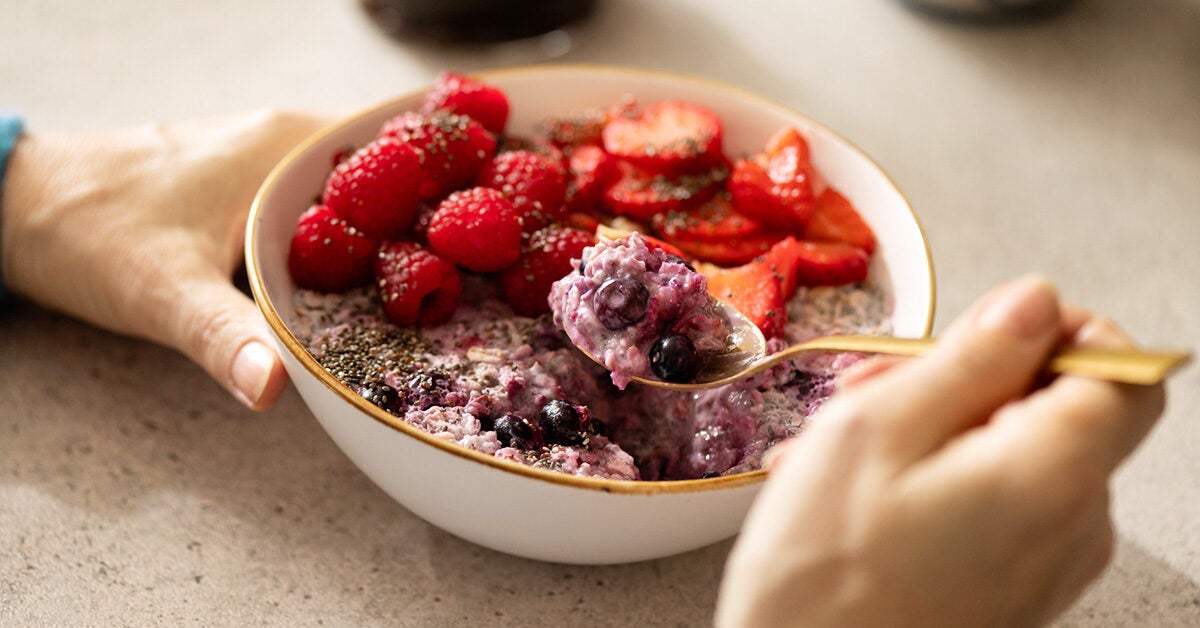Table of Contents
A cholesterol-healthy diet replaces saturated and trans fats with healthy fats and plenty of fruits and veggies.
Consuming a healthy diet is the most effective way to manage your cholesterol levels and reduce your risk of cardiovascular disease.
This means choosing foods that are low in saturated and trans fats while including plenty of dietary fiber, lean proteins, fruits, vegetables, and heart-healthy fats.
A healthy diet can help reduce your levels of low-density lipoprotein (LDL) cholesterol (“bad” cholesterol) and increase your levels of high-density lipoprotein (HDL) cholesterol (“good” cholesterol). This dual effect helps reduce the risk of plaque buildup in your arteries and promotes the removal of excess cholesterol from your bloodstream.
Will eating less fat lower cholesterol?
Eating fewer saturated and trans fats (artificial fats created through a process called hydrogenation) can help lower your cholesterol levels, especially LDL cholesterol. These types of fats are commonly found in animal products, fried foods, and commercial baked goods.
However, because your body needs fat to function properly, it’s important to replace these saturated and trans fats with healthier fats such as monosaturated and polyunsaturated fats, which are found in foods such as olive oil, avocados, and fatty fish.
These healthier fats can help reduce both inflammation and LDL cholesterol levels, contributing to overall heart health and reducing your risk of chronic diseases.
While managing your cholesterol levels, it’s important to strike a balance and choose foods that provide a variety of nutrients while promoting a healthy lipid profile.
Oats and oatmeal
Soluble fiber works by binding to cholesterol in your digestive tract, preventing it from being absorbed into your bloodstream, and helping to remove it from your body.
It’s important to choose oats that are not so overly processed that they lose their nutritional value. Good options include whole oats and steel cut oats.
Fruit
Fruits such as apples, citrus fruits, and berries are rich in fiber and antioxidants, which can help manage cholesterol levels.
Antioxidants may help prevent the oxidation of LDL cholesterol, which is a crucial step in the development of plaque in your arteries.
Vegetables
Vegetables such as leafy greens (spinach, kale) and cruciferous vegetables (broccoli, cauliflower) play a significant role in managing cholesterol levels due to their high fiber content and array of nutrients.
Consuming a variety of vegetables can provide essential antioxidants and phytonutrients that support cardiovascular health.
Green tea
Research suggests that drinking green tea may be very beneficial for managing cholesterol.
Green tea contains catechins, a type of flavonoid with antioxidant properties. Specifically, the catechin epigallocatechin gallate (EGCG) is believed to contribute to the cholesterol-lowering effects of green tea.
An
Foods rich in polyunsaturated fats
Polyunsaturated fats contain omega-3 and omega-6 fatty acids, which have been shown to benefit heart health.
These fats can decrease levels of LDL cholesterol in your bloodstream and maintain or increase levels of HDL cholesterol.
Here are some foods with polyunsaturated fats:
Foods rich in monounsaturated fats
Like polyunsaturated fats, monounsaturated fats can decrease LDL cholesterol levels while maintaining or increasing protective HDL cholesterol.
Here are some foods that contain monounsaturated fats:
- avocadoes
- olive oil and olives
- nuts and seeds (almonds, walnuts, flaxseed, and chia seeds)
The general guidelines for healthy cholesterol levels are as follows:
- Total cholesterol: less than 200 milligrams per deciliter (mg/dL)
- LDL cholesterol: less than 100 mg/dL, or less than 70 mg/dL for individuals at high risk
- HDL cholesterol: 40 mg/dL or higher for men, 50 mg/dL or higher for women
- Triglycerides: less than 150 mg/dL
The worst foods for high cholesterol are typically those that are high in saturated and trans fats. This might include processed meats such as sausages and hot dogs, as well as foods that are deep-fried or heavily processed.
According to current dietary guidelines, less than
While red meat is typically high in saturated fat and not recommended for a cholesterol-friendly diet, lean, organic, grass-fed beef can be a healthier option. It offers greater omega-3 fatty acid content and is lower in saturated fat, which can contribute to maintaining healthy cholesterol levels.
Additionally, limiting your consumption of processed foods, sweetened beverages, and alcohol can contribute to better cholesterol management.
Eating a cholesterol-healthy diet can have a significant impact on promoting heart health and managing your cholesterol levels.
By incorporating a variety of nutrient-rich foods, such as fruits, vegetables, whole grains, lean proteins, and healthy fats, you can improve your cholesterol profile and reduce your risk of cardiovascular disease.
Remember, small changes to your eating habits can make a big difference in your cholesterol levels and your overall well-being.





More Stories
The One Thing You Should Never, Ever Do if You Have Insulin Resistance and Want to Lose Weight
Tuna Salad Lunch Box – JSHealth
Advanced Wellness Course – Heart Health